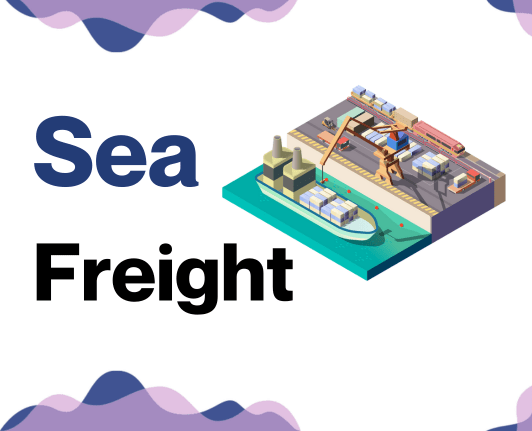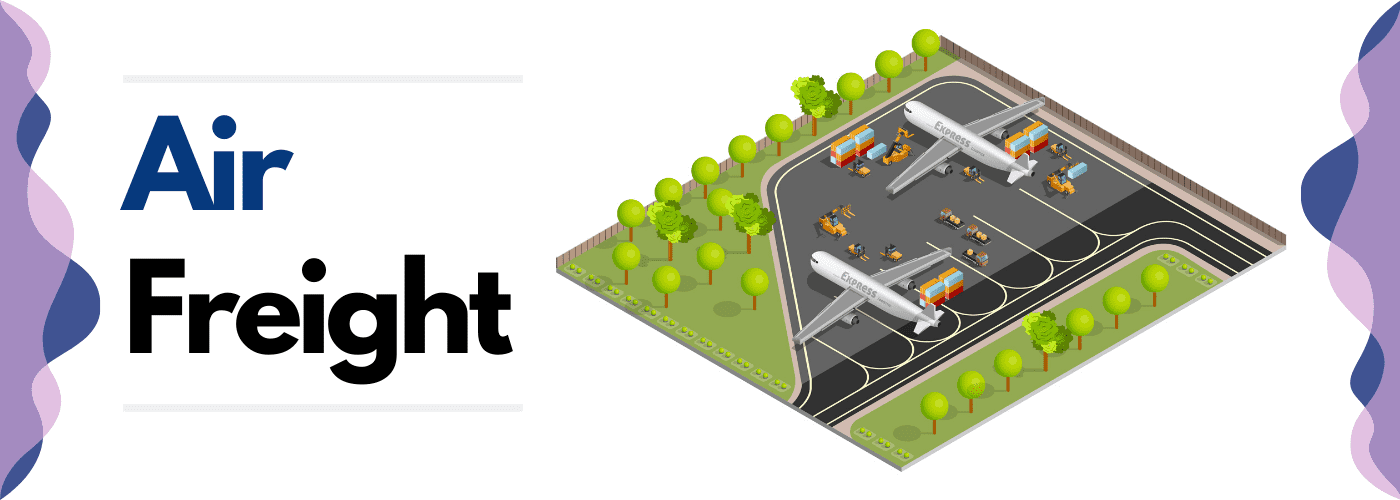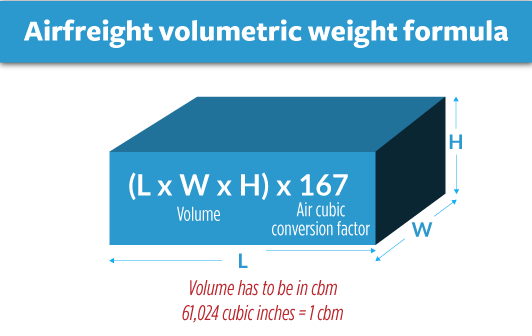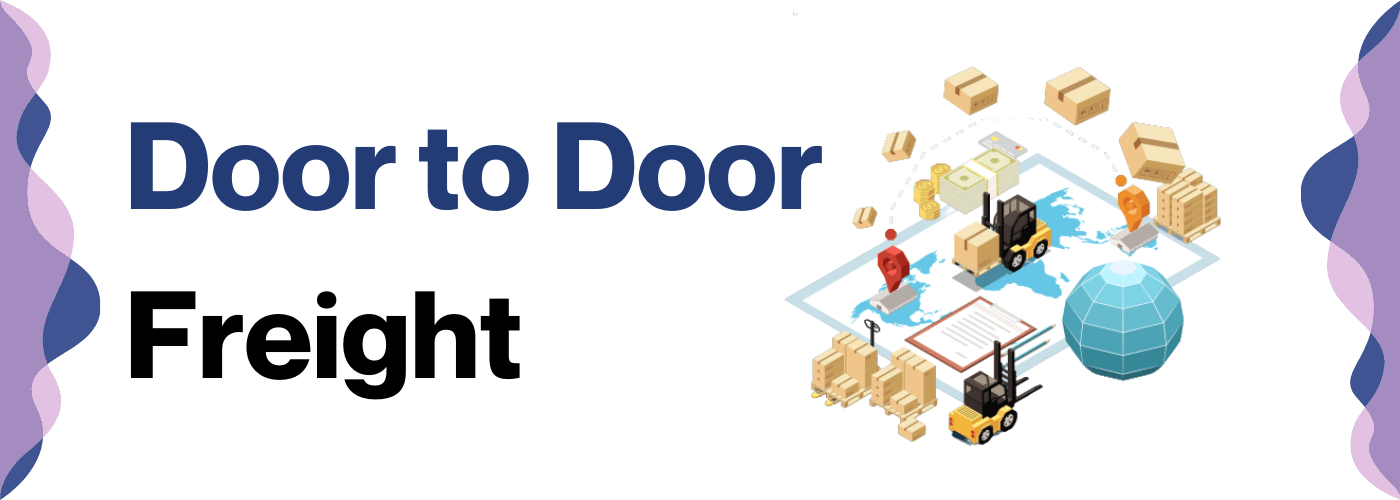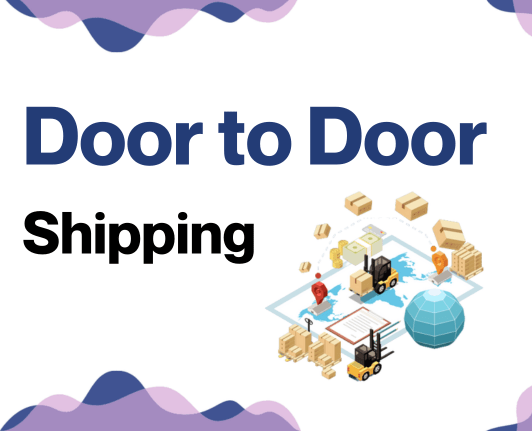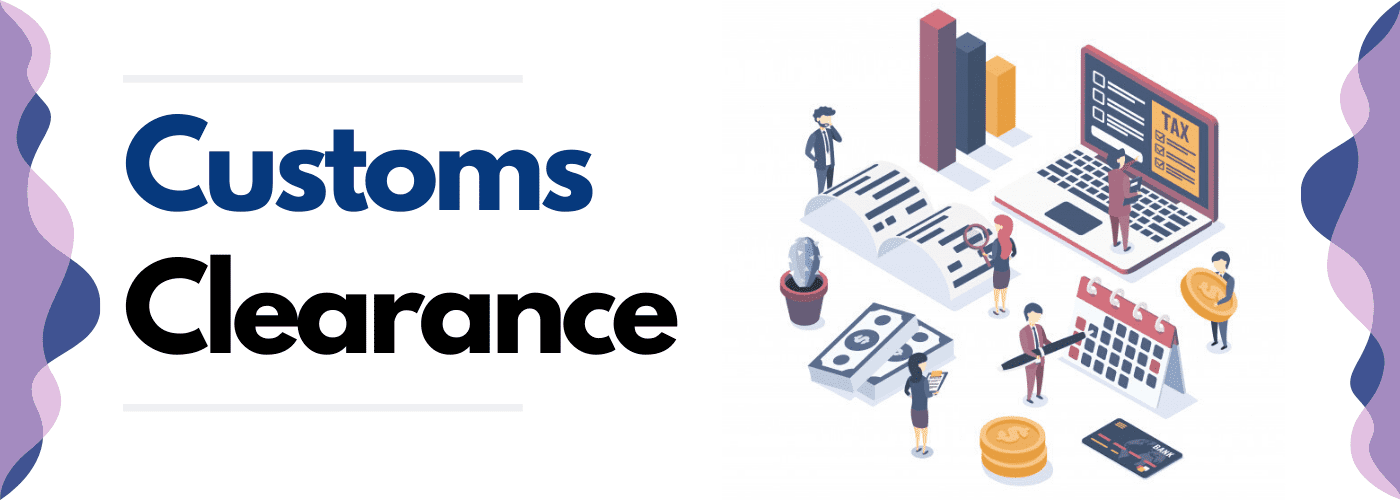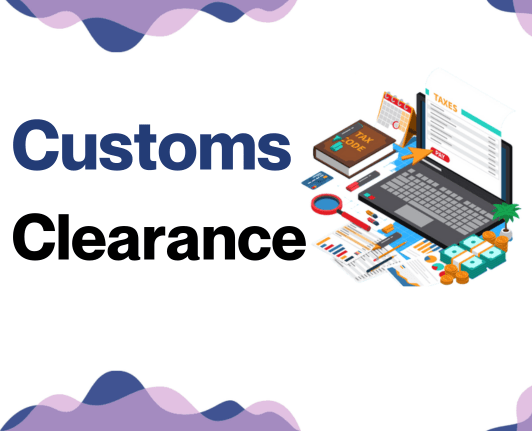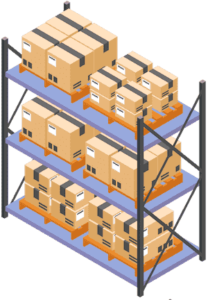Ever tried herding camels in a sandstorm? Well, shipping goods between Qatar and Slovenia might feel about the same! The challenges of understanding shipping rates, transit times, and customs regulations are just a few of the obstacles that businesses face. This guide is tailored to address these pain points, shedding light on the different types of freight options - be it by air, sea, road, or rail. We'll dissect critical information about the customs clearance process, duties, taxes, and provide practical advice specific to the Qatar-Slovenia trade lane. If the process still feels overwhelming, let DocShipper handle it for you! Our one-stop service will simplify every step of the shipping process to successfully move your goods from Qatar to Slovenia.
Table of Contents
Which are the different modes of transportation between Qatar and Slovenia?
In the business world, picking the right route to ship goods from Qatar to Slovenia is kind of like choosing the best path in a maze. Sure, you could fly over everything (air freight), but the costs might make your wallet weep. What about road transport? Well, that's where things get interesting: with multiple borders to cross and challenging terrains to navigate, it's not the smoothest of paths. So we're left with sea and rail options. Each has its pros and cons. Making the best choice requires understanding their differences in speed, cost, capacity, and other factors. Our guide is here to help you unlock this maze!
How can DocShipper help?
Exporting goods from Qatar to Slovenia or vice versa? Let DocShipper handle the tough part for you. We organize transport, breeze through customs, and cover every little detail. Feel puzzled? Our knowledgeable consultants are ready to assist. Click here for a free estimate within 24 hours!
DocShipper Tip: Sea freight might be the best solution for you if:
- You're dealing with hefty quantities or large-scale goods. Sea freight is your go-to for maximizing space without stretching your budget.
- Your cargo doesn't have an urgent deadline, as sea freight typically has longer transit times compared to air or rail.
- Your shipping routes are between major ports, allowing you to leverage the extensive global network of sea shipping lanes.
Sea freight between Qatar and Slovenia
Bursting with commercial dynamics, the sea-based exchange between Qatar and Slovenia promises a vibrant tapestry of opportunities for your business. Think of it as an intricate dance, weaving through the major ports of Hamad in Qatar and Koper in Slovenia, connecting bustling industrial hubs. For firms dealing with considerable cargo volumes, this aquatic ballet offers a high value for money, even though it might perform a bit slower compared to air or rail alternatives.
The crescendo, however, holds some hesitant notes. As you wade through the complexity of international shipping, it's easy to trip over unseen hurdles. It’s akin to solving a Rubik's cube that changes its pattern and rules every time. Unforeseen customs regulations, missteps in documentation, and the maze-like route selection can feel like weaving through an ever-changing labyrinth. But fear not, we've charted a path through these potential pitfalls. With our guide, we'll turn this labyrinth into a straight, well-lit boulevard, packed with best practices and foolproof specifications. Buckle up for a smooth and hassle-free ocean shipping experience from Qatar to Slovenia.
Main shipping ports in Qatar
Hamad Port
Location and Volume: Situated in Umm Al Houl, just south of Doha, Hamad Port is a significant gateway for Qatar's trade activities, boasting a shipping volume of over 1 million TEU.
Key Trading Partners and Strategic Importance: Hamad Port has crucial trade ties with many countries, including China, India, the United States, and various countries within the GCC. By virtue of its advanced equipment and facilities, it plays a strategic role in diversifying Qatar's economy, particularly in the face of various geopolitical changes.
Context for Businesses: If your business is seeking to tap into the fast-growing markets of the Middle East, Hamad Port may serve as a vital hub in your shipping strategy, given its well-equipped facilities and access to major shipping lines.
Ras Laffan Industrial City (RLIC)
Location and Volume: Located approximately 80 km north of Doha, Ras Laffan Industrial City is not as voluminous as Hamad Port, but nonetheless plays a key role in Qatar's liquefied natural gas (LNG) and petroleum sectors.
Key Trading Partners and Strategic Importance: Ras Laffan has established vital trade partnerships globally, specifically with countries heavily involved in the oil and gas sectors. The port accommodates some of the largest LNG tankers and serves as a critical junction in the global energy trade.
Context for Businesses: If your enterprise is in the energy sector aspiring to reach out to the dominant players in the global LNG and petroleum markets, considering Ras Laffan as your logistics partner could be fruitful due to its capabilities and strong networking in the energy sector.
Mesaieed Port
Location and Volume: Mesaieed Port, positioned in the south-east Umm Sa'id, has historically been a key maritime point for Qatar's industry and possesses capabilities to handle a wide variety of goods including containers, livestock, and general cargo.
Key Trading Partners and Strategic Importance: Mesaieed has firm shipping ties with countries worldwide, especially those engaging in heavy industries. It's particularly noteworthy for its involvement in the petrochemical, fertilizer, and aluminum industries.
Context for Businesses: If you're a business operating in heavy industry or dealing with large, bulky cargo, Mesaieed's diversity in handling different types of goods could make it an attractive part of your shipping strategy.
Main shipping ports in Slovenia
Port of Koper
Location and Volume: Located on the Adriatic Sea and having direct rail access to Central and Eastern Europe, the Port of Koper is an invaluable trading point for Slovenia. Annually, it handles around 900,000 TEU.
Key Trading Partners and Strategic Importance: Koper's key trading partners include Italy, Austria, Hungary, and Croatia. As the largest port in Slovenia and closest to the South East European markets, it is of strategic importance not only to Slovenia but also other European countries.
Context for Businesses: If you're planning to reach Eastern and Central Europe, the Port of Koper can be a critical part of your shipping strategy. Its unique position and efficient connectivity make it a convenient and cost-effective choice for goods transit.
With Slovenia being a relatively small country, it has only one main international port, the Port of Koper. Thus, this is the key location if you plan on conducting shipping activities within or across Slovenia. It is well equipped and strategically positioned to facilitate international trade, making it an essential introduction for anyone seeking to understand Slovenia's shipping landscape.
Should I choose FCL or LCL when shipping between Qatar and Slovenia?
Choosing between consolidation (LCL) and a full container load (FCL) for your sea freight from Qatar to Slovenia isn't a simple pick. It's a strategic decision that can be a game-changer in your freight adventure. One can minimize costs, another speed up delivery. Your business objectives define this choice and the following guidance aims to bisect these freight options, helping you sail smoothly towards a profitable decision.
LCL: Less than Container Load
Definition: LCL, or Less than Container Load, refers to shipments that are not large enough to fill a standard cargo container. It consolidates goods from multiple shippers into a single container, allowing shippers to share the space and cost.
When to Use: LCL freight is ideal for smaller shipments, particularly when your cargo volume is less than 13-15 CBM (Cubic Metres). This approach provides flexibility, as you only pay for the space you use, and is often more cost-effective for low-volume shipments.
Example: Let's say a Doha-based fashion retailer wants to send a consignment of designer clothes to a boutique in Ljubljana, but the cargo is only 10 CBM. An LCL shipment would be the ideal option in this case, allowing the retailer to share a container with others and cut costs.
Cost Implications: Using LCL shipping minimizes upfront costs, as the cost of the entire container is split among multiple shippers. However, be aware that LCL freight might incur additional fees at the destination, such as warehouse handling or deconsolidation fees. It's essential to get a detailed LCL shipping quote to understand all potential costs.
FCL: Full Container Load
Definition: Full Container Load (FCL) shipping is when a single shipper books an entire container for their goods, guaranteeing the container will not be shared with others. This ensures the container remains fully sealed from origin to destination.
When to Use: Opting for FCL shipping becomes more economical and secure when the cargo volume exceeds 13/14/15 Cubic Meter (CBM). So, if you're shipping high volume goods from Qatar to Slovenia, FCL could be your best bet.
Example: Consider a business shipping 25 CBM of aluminum systems. Instead of sharing container space (LCL), booking a 20'ft FCL container ensures the shipment remains intact with minimal hassle.
Cost Implications: When requesting an FCL shipping quote, remember the cost is not based on the goods' weight but the container size. While the upfront cost of a 20'ft or 40'ft container hire maybe higher, spreading the cost over the high cargo volume makes it the most economical option in the long run. Plus, the sealed container adds an extra layer of security, minimizing the risk of damage or theft.
Unlock hassle-free shipping
Discover ease in international shipping with DocShipper - we aim to streamline cargo transit from Qatar to Slovenia. Whether it's choosing consolidation or a full container, several factors like volume, weight, and urgency guides this decision. Our ocean freight experts will help you discern the best fit based on these parameters — because at DocShipper, we pledge to simplify your shipping journey. Not sure which to choose? Reach out now for a free cost estimation.
How long does sea freight take between Qatar and Slovenia?
Sea freight between Qatar and Slovenia typically takes on average between 20 to 40 days. The duration can vary depending on several factors; the specific ports being used in both countries, the weight and type of goods being shipped. Thus, we strongly advise reaching out to a reputable freight forwarder such as DocShipper, to get an accurate shipping time and custom quote tailored to your requirements.
Here's a brief table of the average transit times between the key ports of both nations:
| Qatar Ports | Slovenia Ports | Average Transit Time (Days) |
| Hamad Port | Koper Port | 55 |
| Umm Said Port | Koper Port | 54 |
| Ras Laffan Port | Koper Port | 53 |
*The numbers are placeholders; please consult with us for exact values based on your freight specifics.
How much does it cost to ship a container between Qatar and Slovenia?
Cracking the complexities of shipping costs could be like solving a puzzle! A wide array of factors, from the Point of Loading and Destination, to the carrier chose, the types of goods, and even the whims of monthly market fluctuations, can influence ocean freight rates. Consequently, pinning down a precise cost for shipping a container between Qatar and Slovenia is, regrettably, elusive. But don't fret, our seasoned shipping specialists are adept at these puzzles and quote on a case-by-case basis. We roll up our sleeves to deliver to you the best personalised shipping cost. Like a tailor-made suit, we bespoke your shipping needs!
Special transportation services
Out of Gauge (OOG) Container
Definition: Out of Gauge (OOG) Containers are transport units specifically designed to carry overly tall, long or wide loads, also known as Out of Gauge cargo.
Suitable for: Equipment, machinery, or goods that cannot fit within standard container dimensions.
Examples: Construction equipment, heavy machinery, large vehicles, oversized pipes, or windmill propellers.
Why it might be the best choice for you: OOG containers allow goods that exceed standard dimensions to be efficiently transported. If your business deals with extra-large goods or equipment, Out of gauge shipping might be your optimal choice.
Break Bulk
Definition: Break Bulk shipping involves individual items or cargo units that are loaded separately onto a shipping vessel, rather than inside a container.
Suitable for: Heavy and oversized cargo units which cannot fit into containers.
Examples: Huge turbines, massive boilers, construction equipment, or traditional goods like sacks or bags.
Why it might be the best choice for you: Break Bulk can be the most feasible option if your freight is too large or heavy to be containerized. This is an efficient and effective method for shipments that require the loose cargo load approach.
Dry Bulk
Definition: Dry bulk refers to shipping of unpackaged bulk goods, like grains, coal or minerals.
Suitable for: Granular and dry goods that can be loaded directly into the ship's hold.
Examples: As a popular choice for shipping grain, coal, ores, cement and other similar items.
Why it might be the best choice for you: Dry Bulk is highly efficient for shipping large quantities of unpackaged goods. If you deal with such commodities, Dry Bulk might be your ideal solution.
Roll-on/Roll-off (Ro-Ro)
Definition: Roll-on/Roll-off (Ro-Ro) shipping involves vessels designed to carry wheeled cargo that are driven on and off the ship on their wheels or using a platform vehicle.
Suitable for: Vehicles and heavy equipment which can be driven or towed.
Examples: Cars, trucks, semi-trailer trucks, trailers, and railroad cars.
Why it might be the best choice for you: If your business involves transporting vehicles or machinery that can be driven, Ro-Ro is an efficient, direct and cost-effective method, especially relevant if the ro-ro vessel can dock at both your origin and destination.
Reefer Containers
Definition: Reefer containers are refrigerated containers for shipping temperature-sensitive cargo. The term reefer is derived from refrigerated.
Suitable for: Perishable items such as fruits, vegetables, dairy products, or pharmaceuticals.
Examples: Meat, fish, cheese, fruit, and other perishable goods.
Why it might be the best choice for you: Reefer containers maintain quality and increase the life of your temperature-sensitive products during transit. If you deal with such cargo, selecting reefer containers may be essential.
Finally, to make your shipping experience fluid between Qatar and Slovenia, contact us at DocShipper. We're more than happy to help you evaluate these options and provide you with a free shipping quote in less than 24 hours.
DocShipper Tip: Air freight might be the best solution for you if:
- You're up against the clock or have a non-negotiable delivery date. Air freight is your fastest bet for meeting tight timelines.
- Your shipment is on the smaller side, falling below 2 CBM. Air freight is particularly well-suited for compact cargo loads.
- Your goods are destined for locations that aren't well-served by maritime or rail options. Air freight expands your reach by connecting you to a vast array of international airports.
Air freight between Qatar and Slovenia
If your business is regularly shipping small, high-value items like precious jewelry or critical automotive parts from Qatar to Slovenia, you might want to consider air freight. Why is that, you ask? Well, the answer is simple - air freight stands out due to its speed, reliability, and surprisingly, cost-effectiveness for such shipments. Imagine this: Your beautifully crafted Qatari jewelry can be in a swanky Slovenian boutique within hours, ready to dazzle.
However, here's something every shipper needs to get right - the calculation of shipping costs. Many overlook important bits like using the correct weight formula, ending up with a nasty surprise on the invoice. Sounds scary, right? And let's not get started on the ignored best practices that end up costing shippers a fortune. We'll delve deeper into all these potential pitfalls, armed with our insider tips and tricks to make you a pro in air freight. Stay tuned!
Air Cargo vs Express Air Freight: How should I ship?
Looking to transport goods between Qatar and Slovenia, but puzzled by your choices? Here we'll demystify air cargo and express air freight - think of the former as hitching a ride in a shared airline, while the latter is like chartering your own swift plane. In this guide, we'll delve into which option could best match your specific business needs. Let's jet into it!
Should I choose Air Cargo between Qatar and Slovenia?
Opting for air cargo from Qatar to Slovenia might be most economic and reliable for your business, especially if your shipment weighs in at around 100/150 kg (220/330 lbs). Take for example, the renowned cargo services provided by Qatar Airways or Adria Airways, two prominent airlines guaranteeing you safety and reliability. While the cost-effectiveness is notable, be mindful that longer transit times may arise due to their fixed schedules. This method offers a balance of affordability and trustworthiness that might align well with your budget. Make sure to weigh up these factors when making your decision.
Should I choose Express Air Freight between Qatar and Slovenia?
Express air freight is a specialized service that uses cargo-only planes, ideal for shipments under 1 CBM or 100/150 kg (220/330 lbs). If your business is sending such loads between Qatar and Slovenia, this could be the perfect solution. Firms like FedEx, UPS, and DHL excel in this service, offering speedy door-to-door deliveries and real-time shipment tracking. With quicker transit times, your time-sensitive cargos can reach their destination rapidly and efficiently. Using these express couriers, you can ensure your cargo's safe and timely arrival.
Main international airports in Qatar
Hamad International Airport
Cargo Volume: With a capacity of handling 1.4 million tons of cargo annually, Hamad International Airport is the key freight hub in Qatar.
Key Trading Partners: Major trading partners facilitated through this airport include China, India, United Arab Emirates, Singapore, and the USA.
Strategic Importance: Hamad International Airport is the primary international airport in Qatar, acting as a crucial hub in the Middle East. Its strategic location allows for easy connections to far East Asia, Africa, and Europe.
Notable Features: The airport has a separate terminal for cargo operations that includes temperature-controlled zones for perishables and pharmaceuticals. A dedicated live animal facility and dangerous goods area are also in place.
For Your Business: If you're trading with the Middle East, and specifically Qatar, utilizing Hamad International may streamline your operations. The airport's modern facilities and strategic location can minimize transit times and simplify regional distribution. Furthermore, a wide range of commodities, including perishable items and live animals, can be handled efficiently.
Main international airports in Slovenia
Ljubljana Jože Pučnik Airport
Cargo Volume: 12,000 tonnes annually
Key Trading Partners: Austria, Germany, Italy, Croatia, Hungary
Strategic Importance: As the only international airport in Slovenia, the Ljubljana Jože Pučnik Airport holds a pivotal role in logistic dynamics of the country, connecting it to major European hubs and facilitating international trade.
Notable Features: The airport boasts a modern cargo terminal that can handle different types of cargo, including perishables, drugs, and live animals. A temperature controlled warehouse ensures products stay in the best condition during transit.
For Your Business: If your business frequently ships to or from Central Europe, Ljubljana Jože Pučnik Airport can be a strategic pivot for your logistics, given its strong connectivity and advanced facilities. Shipping through this hub can ensure timely delivery and optimal conditions for your goods.
Maribor Edvard Rusjan Airport
Cargo Volume: Information not readily available
Key Trading Partners: Primarily serves trade within the European Union
Strategic Importance: The Maribor Edvard Rusjan Airport is the second largest airport in Slovenia, with a lesser throughput but is strategically located near the border with Austria. Good for businesses located in eastern Slovenia, wanting to avoid the more congested Ljubljana Jože Pučnik Airport.
Notable Features: The airport is undergoing major expansion plans, with the aim to better serve cargo traffic. Despite currently not having a high throughput, it has potential for future growth.
For Your Business: Maribor Edvard Rusjan Airport could serve as a potential cargo hub, especially if you anticipate growth in your operations and are looking for less congested options. Its expansion plans may make it more viable for handling high cargo volumes in the future.
How long does air freight take between Qatar and Slovenia?
Typically, it takes around 3 to 6 days to ship goods between Qatar and Slovenia via air freight. However, keep in mind that these are average times and actual transit durations can vary. Certain factors such as specific airports involved, weight, and the nature of the goods can significantly influence the timing. For the most precise and tailored time estimates, it's always best to consult with a specialized freight forwarder like DocShipper.
How much does it cost to ship a parcel between Qatar and Slovenia with air freight?
The cost of air freight shipping per kg from Qatar to Slovenia falls within a broad average, with many variables impacting the final price. Factors such as the distance to and from airports, package dimensions and weight, as well as the nature of the goods, can greatly influence the cost. Please note that an exact figure isn't practical here. Our devoted team is always ready and eager to provide you with the most optimal rates, offering personalized quotes that take into account all these aspects. Post your request today and get your free quote within 24 hours. We're here to work with you every step of the way.
What is the difference between volumetric and gross weight?
Gross weight refers to the actual weight of the shipment and packaging, simply how much your package weighs when put on scales. On the other hand, Volumetric weight, also known as dimensional weight, takes into account the space a package occupies in relation to its actual weight.
For Air cargo services, calculating the volumetric weight involves multiplying the package dimensions (Length x Width x Height in cm) and then dividing by 6000. Say you're shipping a cube package with each side measuring 50cm, and it weighs 40kg. The volumetric weight would be (50 x 50 x 50) / 6000, which results in 20.83kg (approx 46 lbs).
However, Express Air Freight calculates volumetric weight slightly differently. The dimensions are still multiplied together but then divided by 5000. So, using the same package as before, your volumetric weight for Express Air Freight would be (50 x 50 x 50) / 5000, giving us 25kg (or approximately 55 lbs).
The freight charges are based on which of the two weights - gross or volumetric - is higher, also known as the chargeable weight. So, for our imaginary package, the chargeable weight would be the gross weight of 40kg (or 88 lbs) as it's higher than the calculated volumetric weight. Understanding this principle helps businesses plan their packaging more cost-effectively and avoid unexpected shipping charges.
DocShipper tip: Door to Door might be the best solution for you if:
- You prioritize a smooth, hassle-free shipping experience from start to finish. Door-to-door services manage the entire journey, from initial collection to ultimate delivery.
- You appreciate streamlined communication and would rather deal with one person. A dedicated agent is usually assigned to oversee every detail of your door-to-door shipment.
- You want limit the number of touchpoints for your cargo. Door-to-door services reduce the frequency of transitions between various transport methods, thereby lowering the likelihood of damage or loss.
Door to door between Qatar and Slovenia
In the world of international trade, Door-to-Door shipping is a hassle-free method that takes care of your cargo right from the pick-up from Qatar to final delivery in Slovenia. Offering cost-effectiveness, simplicity, and reduced transit times, it's a stellar choice for businesses seeking efficiency. Now, let's unravel the immense benefits of Door-to-Door shipping. So, are you ready to dive in?
Overview – Door to Door
Door-to-door shipping from Qatar to Slovenia can be your stress-free logistics solution. Advantages like hassle-free customs clearance and end-to-end tracking make it popular among DocShipper clients. Imagine not worrying about confusing paperwork or constant cargo tracking. Despite being slightly costlier, it removes all the complex layers of the shipping process, providing a seamless experience. Be aware though; not all goods can avail of this service due to customs restrictions. Still, for businesses seeking convenience over cost, door-to-door shipping offers a way to bypass many potential headaches. Your goods are our responsibility from pick-up to delivery, a relief many businesses are happy to invest in.
Why should I use a Door to Door service between Qatar and Slovenia?
Ever wondered what it'd be like to have your cargo sprout wings and fly straight from Qatar to Slovenia? That's virtually what's happening when you use a Door to Door service. Here are five reasons why this might be the best choice for you:
1. Relieves Stress: Let's face it, logistics can turn into a nerve-wracking puzzle. With Door to Door service, everything from goods pickup in Qatar to delivery in Slovenia is handled professionally. Just sit back, relax, and let the experts take over.
2. Guarantees Timely Delivery: Time-sensitive shipment? No problem. Door to Door service is designed to ensure punctuality, saving you from any delivery delay nightmares.
3. Ensures Specialized Care: Have complex cargo? This service offers specialized handling, making sure any unique shipping requirements are meticulously met, be it gigantic machinery or fragile glassware.
4. Heightened Convenience: No need to fret about multiple logistics providers or trucking to the final destination. This premium service takes your cargo straight from the origin to the destination point, without any logistics hiccups.
5. Direct Responsibility: One provider equals one point of contact, leaving no room for confusion. This direct responsibility means any queries, changes, or problems can be handled swiftly and efficiently.
So, why not give your cargo the VIP treatment it deserves with Door to Door service from Qatar to Slovenia!
DocShipper – Door to Door specialist between Qatar and Slovenia
Experience stress-free shipping from Qatar to Slovenia with DocShipper! We handle everything from A to Z - packing, transport, customs clearance, and more across all major shipping methods. Our dedicated Account Executives are seasoned professionals, ready to guide you throughout the process. No need for worries, we've got your shipment covered. Contact us for a quick, free estimate within 24 hours or connect with our consultants at your convenience. Trust DocShipper, your reliable partner for comprehensive door-to-door shipping solutions!
Customs clearance in Slovenia for goods imported from Qatar
Customs clearance - seemingly intimidating words, right? Imagine you're shipping goods from Qatar to Slovenia. Sounds straightforward until unexpected fees thrive, turning your tidy budget into a fiscal nightmare. The culprit? A complex web of customs duties, taxes, quotas, and licenses. Each misstep brings the risk of your priceless cargo marooning in customs. We’re diving deep into this labyrinth in the following sections, suggesting how you can navigate safely. Don't stress though, DocShipper's got your back. With our worldwide reach, we can manage every step. Need an estimate? Just send us your goods’ origin, value, and HS Code. Together, we'll keep your shipment on course and your budget intact.
How to calculate duties & taxes when importing from Qatar to Slovenia?
Estimating duties and taxes when shipping goods from Qatar to Slovenia is a multifaceted process that revolves around a handful of crucial elements. Firstly, the nation in which the commodities were produced or developed plays a significant role in determining the duties. This, therefore, forms the first step – identifying the country where your goods originated. This sheds light on the origin of your product and the trade agreements that may influence the duties.
Understanding the Harmonized System (HS) Code for your items is the next important angle, as it's used by customs officials worldwide to categorize and levy tariffs on imports. Customs Value, a key metric, is another factor to consider which includes the cost, insurance, and freight price (CIF) of your goods. Then there's the Applicable Tariff Rate, which varies based upon the product and the trade agreements between Qatar and Slovenia.
In addition to these, other taxes and fees may apply, highlighting the need for comprehensive estimates. This can involve Value Added Tax (VAT), customs handling fees, excise duties, or other specific country-level charges and regulations.
Through understanding these factors, you'll have a thorough basis for estimating the duties and taxes when importing goods from Qatar to Slovenia. It's a detailed process, but with the right knowledge and tools, you can successfully navigate it, making international shipping a smoother and more predictable venture for your business.
Step 1 - Identify the Country of Origin
Knowing your product's Country of Origin (COO) is vital for five significant reasons, even before fetching the Harmonized System (HS) code.
First, it streamlines the customs process, helping officials anticipate your import's nature. Second, it sets the stage for determining Import Duties. Third, it benefits from favorable trade agreements between Qatar and Slovenia. Perhaps you weren't aware Slovenia falls under the EU-Gulf Cooperation Council (GCC) Free Trade Agreement? This pact offers preferential tariffs, making your imports cheaper.
Fourth, your COO can impact other applicable taxes. For example, certain goods from Qatar may be subject to additional taxes not applied to other countries. Lastly, it's critical to navigate import restrictions. Products like alcohol or tobacco from Qatar might face stricter regulations. Own a business dealing with these items? A heads up - prepare for extra paperwork.
So, don't breeze over your COO! It's more than just a label; it's your key to efficiently and effectively shipping from Qatar to Slovenia. You'll be glad you pinpointed it come customs time. Get those savings and avoid unexpected roadblocks!
Step 2 - Find the HS Code of your product
Understanding the Harmonized System (HS) Code of your product is crucial when transporting goods internationally. This code, created and maintained by the World Customs Organization, is a standardized system of names and numbers to classify traded products. It's used globally and plays a key role in calculating taxes and duties, tracking statistics, and even in making trade negotiations.
Some businesses may lean on their suppliers for this information, as they're often familiar with the commodities they're importing, along with pertinent regulations. However, if that's not possible, don't fret. That's why we're taking you through a straightforward process to find it.
Here's your step-by-step guide: Begin by visiting the Harmonized Tariff Schedule where you'll find an HS lookup tool tailored for this purpose. Once there, type the name of your product into the search bar, and voila! Your answer lies in the Heading/Subheading column, where various HS codes are listed.
But here's a word of caution: Accuracy matters. Picking the correct HS Code is vital as a wrong code can lead to delays, customs roadblocks, and potential fines. So, please ensure that you pick the most accurate code for your product.
Here's an infographic showing you how to read an HS code. Remember, we're here to guide you through the complexities of international shipping and make your journey as smooth as possible.
Step 3 - Calculate the Customs Value
Shipping goods from Qatar to Slovenia? Not too tricky once you grasp customs values. You see, this isn't just your product's price. Consider it a combination of the cost of your item (yes, in USD now), the cost of international shipping, and the insurance cost too. This trifecta is your CIF Value (Cost, Insurance, and Freight). For example, you’ve got a batch of electronics worth $2000, with shipping costing you $500 and insurance around $50. Your customs value then? A cool $2550. Simple, right? Now, keep this in mind when you're preparing your import paperwork. Get this right and you're one step closer to breezing through customs.
Step 4 - Figure out the applicable Import Tariff
An import tariff, simply put, is a tax imposed on goods crossing national boundaries. When you're importing goods from Qatar to Slovenia, which is part of the European Union, you're required to identify the applicable import tariff.
The EU uses a system known as TARIC (Integrated Tariff of the European Union), which you can access via this link: TARIC System - European Customs.
Starting from the Harmonized System (HS) code you identified earlier, in this example let's say your product, an antique chair, has the HS code 9401.60 and is imported from Qatar. To find the import tariff:
1. Enter the HS code and Qatar as the country of origin.
2. Check for any duties and taxes applied to your product. For our antique chair, let's say the import tariff rate is 7%.
But that's not all. Understanding the calculation ahead can save you any unpleasant surprises at customs. You pay import duties based on the Cost, Insurance, and Freight (CIF) value of the goods. If, for instance, the CIF for our antique chair is $1000, the import duties would be 7% of this amount, amounting to $70.
It's important to check these details, as they can significantly impact your costs and, subsequently, your pricing strategy.
Step 5 - Consider other Import Duties and Taxes
In addition to standard tariff rates for goods imported to Slovenia from Qatar, you may also encounter other types of import duties and taxes. For instance, let's consider excise duty, levied on items like alcohol or tobacco. It's a supplement to the standard tariff and can significantly bump up costs.
An anti-dumping tax is another potential extra charge. If a product is sold at a lower price in the destination country than in its home country, this tax may be applied to create a level playing field. Say, for example, you're importing furniture from Qatar which is sold more cheaply in Slovenia. An anti-dumping tax might be added to equalize the market.
Most importantly, don't forget about Value Added Tax (VAT). In Slovenia, the standard VAT rate is 22%. Meaning, you'd be obliged to pay 22% of the CIF value (Cost+Insurance+Freight) in VAT. If the total CIF value of your goods is $2000, you'll have to pay $440 as VAT.
Bear in mind, this is only an illustrative example and actual rates/taxes could vary based on many factors. Always verify current rates to avoid unexpected expenses. It may seem complicated, but understanding these different layers of costs will give you a holistic view of your import expenses and support profitable decision-making.
Step 6 - Calculate the Customs Duties
Understanding how to calculate customs duties can save your business from unforeseen costs when importing goods from Qatar to Slovenia. Customs duties are calculated using the customs value of your goods.
Here's how it works:
Scenario 1 (Customs Duties only): If you're importing textiles worth $50,000 with a duty rate of 10%, your customs duties amount to $5,000.
Scenario 2 (Customs Duties and VAT): For electronic items worth $20,000 at a 10% duty rate and 22% VAT, first calculate the customs duty ($20,00010% = $2,000). Then calculate the VAT based on the total goods value plus customs duty ($22,00022% = $4,840). Your total due is the sum of the customs duties and VAT, which is $6,840 in this case.
Scenario 3 (Customs Duties, VAT, Anti-Dumping, and Excise Duty): For alcohol worth $30,000, with a duty rate of 10%, VAT of 22%, anti-dumping taxes of 3%, and an excise duty of $5 per liter for a 10,000-liter consignment. Calculate each tax consecutively: Customs duty ($30,00010% = $3,000), VAT ($33,00022% = $7,260), anti-dumping ($33,0003% = $990), and excise duty ($510,000 Liters = $50,000). The total is a sum of all these charges ($61,250).
Calculating these costs can be complex and time-consuming. At DocShipper, our expert team can handle every step of the customs clearance process worldwide, ensuring you never overpay. Contact us for a free quote within 24 hours.
Does DocShipper charge customs fees?
Although DocShipper acts as your customs broker when you ship goods to Qatar or Slovenia, we don't charge customs duties. Your invoice will include our clearance fees, but duties and taxes are separate, paid directly to the government. We provide all official customs documents to ensure transparency, proving you've only been charged government-determined costs. So, if you're fretting about hidden charges, breathe easy. Our approach ensures you only pay what's due, nothing more.
Contact Details for Customs Authorities
Qatar Customs
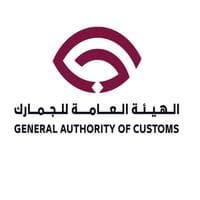
Official website: https://www.customs.gov.qa/
Slovenia Customs
Official name: Customs Administration of the Republic of Slovenia
Official website: https://www.gov.si/en/
Required documents for customs clearance
Smoothly maneuvering through the maze of customs can be overwhelming. To ease this, we'll unpack key documents: the Bill of Lading, Packing List, Certificate of Origin, and Documents of Conformity (CE standard). Understanding these will make your shipping experience less daunting and your path to global markets clearer.
Bill of Lading
The Bill of Lading is your best friend when shipping goods from Qatar to Slovenia, securing the handover of your goods. As your proof of ownership, it's as crucial as your passport during international travel. Nowadays, the good old paper-based document has an electronic sibling, the telex release. This digital dynamo speeds up cargo release, eliminating time-consuming couriers and cutting red tape. Opting for airfreight? Then, the Air Waybill (AWB) steps in as your equivalent document. Here's a tip: to make your cargo journey smooth sailing, ensure every little detail on your Bill of Lading or AWB is flawless. Mistakes can cause delays and increase costs, so double-check it as you would do with your travel documents. Happy shipping!
Packing List
When shipping goods from Qatar to Slovenia, your Packing List is like the master key to your cargo. It details the exact content of your shipment, including dimensions, types, weights, and quantities of the products. Without this crucial document, imagine trying to clear a sea or air freight shipment through customs without a lens. It's your responsibility as a shipper to ensure this document is accurate, else it could be like declaring a box of wooden toys whilst smuggling in fine china! So please, iron out every detail on your Packing List. It ultimately fast-tracks the customs clearance process, helping your goods seamlessly transition from the heart of Middle Eastern business hub, Qatar, to the diverse market of Slovenia.
Commercial Invoice
When shipping goods from Qatar to Slovenia, your Commercial Invoice holds the keys to seamless customs clearance. Detailing your transaction, it must include information like product descriptions, quantities, and values. Use the Harmonized System (HS) code that relates to your product. This code is key as it enables customs officers to tag the right tariffs on your goods. Creating perfect alignment among all your shipping documents helps to prevent potential hiccups during the process. For instance, if the product quantity matches exactly on your Commercial Invoice and your Bill of Lading (BOL), you're less likely to encounter delays. Remember, customs officials in both Qatar and Slovenia pay close attention to these crucial details. A well-prepared Commercial Invoice is your shot at hassle-free, efficient shipping.
Certificate of Origin
When trading goods between Qatar and Slovenia, the Certificate of Origin (CoO) is your passport to preferential customs duty rates. Here's why it's crucial: A CoO proves your cargo's home country - say you're exporting crystal chandeliers made in Doha. Without a valid Qatari CoO, your exquisite designs risk getting stuck in Slovenian customs, or worse, hit with sky-high duties. But, add that nifty document confirming its Qatari roots, and voila - green light through customs! Procuring a CoO can be a procedural hassle, but it's an unmatched time and cost-saver in your export-import journey.
Certificate of Conformity (CE standard)
In the world of shipping goods between Qatar and Slovenia, the Certificate of Conformity (CE standard) plays a huge role. With Slovenia being a part of the European Union, this certificate verifies that your product complies with the EU's strict safety, health, and environmental standards. Imagine it as the 'passport' for your goods, making the entry into the European market smoother.
It's different from quality assurance, which primarily focuses on maintaining quality during production. Instead, the CE mark assures consumers about safety standards. Remember it's not interchangeable with quality certification or US standards.
A practical step for exporters in Qatar is to kick-start the process early. If your product needs this certificate, make sure it's embedded in your planning stage. Avoid last-minute scrambling that might delay your shipment or, worse, get your goods rejected at Slovenian customs.
Your EORI number (Economic Operator Registration Identification)
If you're preparing to ship goods from Qatar to Slovenia, an important detail to note is the necessity of an EORI Number. Why? It's your unique identifier within the EU customs territory, and Slovenia being an EU member, this applies. Akin to a passport control item for your goods, the EORI Number is pivotal for tracking imports and exports, facilitating a smoother customs clearance process. So, before you ship your newest collection of Qatari handmade pottery or Slovenian honey, ensure your business is registered for an EORI Number. It's one simple step towards ensuring your goods reach their destination without hiccups. Now, you're one stride closer to becoming a master in international logistics. Remember, each shipping clause is a gear in the well-oiled machine of your business' global journey.
Get Started with DocShipper
Clearing customs can be a tricky process. At DocShipper, we take the hassle off your shoulders. Our expert team efficiently handles each step of the customs clearance, ensuring your goods move smoothly from Qatar to Slovenia. Premium service without the stress. Reach out now and receive a free, no-obligations quote within 24 hours. Make the smart choice and let us manage your shipping needs today.
Prohibited and Restricted items when importing into Slovenia
When preparing to ship goods to Slovenia, knowing what you can't import is just as crucial as understanding the process itself. You wouldn't want to encounter unexpected hurdles or penalties, would you? Let's unwrap the mystery around prohibited and restricted items, so your consignment moves smoothly, without the red-tape headaches.
Restricted Products
1. Pharmaceuticals: You have to apply for a pharmaceuticals license from the Agency for Medicinal Products and Medical Devices of Slovenia.
2. Plants and Plant Products: For this, you’re required to get permission from the Administration of the Republic of Slovenia for Food Safety, Veterinary, and Plant Protection.
3. Firearms and Ammunition: For these goods, you have to secure a special license from the Ministry of the Interior.
4. Alcoholic beverages: You need a license from the Financial Administration of the Republic of Slovenia.
5. Tobacco Products: For this category, securing a permit from the Financial Administration of the Republic of Slovenia is a must.
6. Chemical Products: You will need to secure permission from the Chemical Office of the Republic of Slovenia.
7. Dangerous Goods: You have to apply for a Dangerous Goods Safety Advisor (DGSA) certificate which is managed by the Transport Administration of the Republic of Slovenia.
8. Art, Antiques, and Cultural Goods: You need a permit from the Ministry of Culture for the import of these items.
9. Waste and Scrap: For these goods, securing a permit from the Environment Agency of the Republic of Slovenia is necessary.
10. Food Products: You have to apply for a food permit from the Administration of the Republic of Slovenia for Food Safety, Veterinary, and Plant Protection.
Always ensure to remain compliant with Slovenian law and that your items are not prohibited for import. As each product category has its own regulations and criteria for procurement and import, make sure you meet the specific requirements and have the proper permits and licenses secured before shipping.
Prohibited products
- Illicit drugs and narcotics
- Counterfeit money and goods
- Unauthorized pharmaceuticals
- Explosives and fireworks without the necessary permission
- Pornographic material
- Weapons and ammunition without a special permit
- Endangered animals, plants and their derivative products under CITES
- Radioactive substances
- Invasive or potentially harmful non-native plant species
- Cultural goods without an export license
- Toxic and hazardous materials without a permit
- Asbestos and products containing asbestos
- All forms of tobacco for oral use (e.g., snus)
Are there any trade agreements between Qatar and Slovenia?
While presently there is no Free Trade Agreement (FTA) or Economic Partnership Agreement (EPA) between Qatar and Slovenia, don't fret. There are ongoing discussions between the European Union (of which Slovenia is a member) and Gulf Cooperation Council (including Qatar) to establish a FTA, indicating potential easing of trade. Meanwhile, you may leverage bilateral agreements like Double Tax Avoidance Agreement and Bilateral Investment Treaty to optimize your shipping across borders. Keep an eager eye on the horizon for these upcoming opportunities!
Qatar - Slovenia trade and economic relationship
In the landscape of global commerce, the economic relationship between Qatar and Slovenia deserves a special mention. This alliance started blossoming towards the end of the 20th century, with both nations recognizing shared interests in sectors like technology, energy, and healthcare.In 2022, Qatar exported goods worth $17.7 million to Slovenia, while Slovenia exported products valued at $36 million to Qatar. Qatar's exports to Slovenia, including refined petroleum and ethylene polymers, have grown at an annualized rate of 37.4% over the past 26 years, reaching $17.7 million. Similarly, Slovenia's exports to Qatar, such as sawn wood and utility meters, have seen a 19.5% annualized growth rate, totaling $36 million.
Your Next Step with DocShipper
Balancing complex shipping regulations between Qatar and Slovenia can be taxing, especially for first-timers. Let DocShipper lighten the load! Our mastery reduces stress and streamlines procedures for air, sea, road, and rail freight. Don't drown in paperwork; leave the customs, duties, and administration to us. Ready for a hassle-free shipping experience? Contact DocShipper now.
Additional logistics services
Uncover the extra mile we go in logistics, from supply chain management to storage solutions, ensuring a smooth and hassle-free process at every step. Explore our full-service approach to simplifying your shipping needs.
Warehousing and storage
Struggling to find trustworthy warehousing in Qatar or Slovenia? You're not alone. For businesses shipping temperature-sensitive items like fragrances or pharmaceuticals, the hunt for a controlled environment can be tough. Don't sweat it - our comprehensive warehousing services ensure your goods are both safe and compliant. Interested? Let's dive deeper.
Packaging and repackaging
When shipping items between Qatar and Slovenia, proper packaging and repackaging play a crucial role in safeguarding your goods. A reliable agent ensures your delicate ceramics don't end up a pile of rubble or your temperature-sensitive pharmaceuticals stay chilled. Think of this service as your product's personal shield, custom-fit for every unique journey it undertakes – be it across the roasting Arabian deserts or through the crisp Alpine winters.
Cargo insurance
Cargo insurance significantly reduces risk exposure in your shipping process. Unlike fire insurance, which covers loss due to heat or flames, cargo insurance safeguards your goods from unexpected disasters during transport such as theft or damage. For instance, if your cargo, let's say electronic equipment, is damaged during transit, a comprehensive insurance policy will ensure financial coverage, leaving no room for unforeseen costs. Trust us, it's like a safety net for your goods on their journey. Prevention is always better than cure!
Supplier Management (Sourcing)
Struggling to manufacture and export from Qatar to Slovenia? DocShipper has your back, sourcing suppliers in Asia and East Europe while mastering the procurement process. Kick language barriers to the curb as our team navigates the complexities, no interpreter needed. Think of sourcing as world-class matchmaking — finding your business the perfect partner.
Personal effects shipping
Moving between Qatar and Slovenia with bulky or fragile items? Our Personal Effects Shipping service ensures safe handling. Think of it like transporting a grand piano across countries - you need professional care and flexibility to make it sound just as beautiful in Ljubljana as it did in Doha. We've got you covered.
Quality Control
Ensuring your goods pass quality checks before shipping from Qatar to Slovenia can save you hefty fines or product rejections. Take the case of a Qatari furniture manufacturer shipping custom pieces to Ljubljana; inspecting for material defects or design flaws can prevent losses due to non-compliance with EU safety standards. Quality control is your safety net in global logistics.
Product compliance services
Ensuring product compliance is crucial to avoid regulatory surprises. Our services go beyond normal forwarding and include lab testing for certification. This gives you the peace of mind knowing that your goods meet all necessary standards before embarking on their journey. After all, the last thing you want is your cargo held up at customs because of non-compliance!
FAQ | For 1st-time importers between Qatar and Slovenia
What is the necessary paperwork during shipping between Qatar and Slovenia?
When shipping from Qatar to Slovenia, the primary paperwork we, at DocShipper, need includes the bill of lading for sea freight or an airway bill for air freight, the packing list and commercial invoice from your end. Usually, we take care of the bill of lading or airway bill for you, streamlining the process. Depending on the nature of your goods, other documents like the Material Safety Data Sheet (MSDS) or specific certifications might be required. Keep in mind each case is unique. Together, we'll ensure all the necessary documents are prepared accurately for a smooth shipping process.
Do I need a customs broker while importing in Slovenia?
Having a customs broker handle your imports into Slovenia is highly advisable, largely due to the intricate nature of the procedure and the strict necessity to provide specific details and documentation. Here at DocShipper, we understand the complexity of these processes inside out and have a strong track record in successfully representing your cargo at customs on most shipments. This way, you stay assured that your goods are in-the-know and experienced hands while navigating through various customs procedures.
Can air freight be cheaper than sea freight between Qatar and Slovenia?
In comparing air and sea freight costs between Qatar and Slovenia, key factors like route, weight, and volume are essential. Typically, for cargo less than 1.5 Cubic Meters or weighing under 300 kg (660 lbs), air freight can be more cost-effective and should be considered. However, each shipment is unique and may differ due to these factors. At DocShipper, we understand this intricate aspect of your business and strive to provide the most competitive option. A dedicated account executive will manage your freight needs, ensuring you're apprised of the best possible solutions tailored to your specific shipment.
Do I need to pay insurance while importing my goods to Slovenia?
As DocShipper, we'd like to emphasize that although insurance isn't strictly required when you're importing goods to Slovenia, we highly recommend it. Why? Because various incidents can occur during shipping, such as damage, loss, or theft. Having insurance in place is a smart protective measure. It may seem like an added cost at the start, but it could potentially save your business from much larger losses in the future. Overall, it's a wise choice for peace of mind during international transportation.
What is the cheapest way to ship to Slovenia from Qatar?
Considering the long distance and geographical barriers, shipping from Qatar to Slovenia by sea is typically the most cost-effective method. We suggest using LCL (Less than Container Load) if your freight isn't large enough for a full container. Despite being slower than air freight, sea freight offers substantial savings, making it a popular option for many of our clients. Always remember to factor in customs fees upon arrival in Slovenia.
EXW, FOB, or CIF?
Choosing between EXW, FOB, or CIF entirely hinges on your relationship with your supplier. It's essential to remember that your supplier isn't necessarily a logistics veteran, so delegating the international freight and destination process to a specialized agent like us at DocShipper is often a wise choice. Regularly, suppliers sell under the terms of EXW (right at the factory doorstep) or FOB (inclusive of all local charges up to the origin terminal). Regardless, we can manage the entire process for you, offering a comprehensive door-to-door service for your convenience and peace of mind.
Goods have arrived at my port in Slovenia, how do I get them delivered to the final destination?
When your goods arrive at the Slovenian port under CIF/CFR incoterms, you'll need to enlist a customs broker or a Freight Forwarder to assist with clearance and delivery to your final destination. With our DAP incoterms service, we handle the whole process for you, from terminal to final delivery. Check with your assigned account executive for further details.
Does your quotation include all cost?
Absolutely, we include every cost in our quotations, barring the destination duties and taxes. If you require an estimation for these, your dedicated account executive can provide it. At DocShipper, we maintain full transparency and there are no hidden fees to worry about. We ensure no unpleasant surprises await you in the billing.


